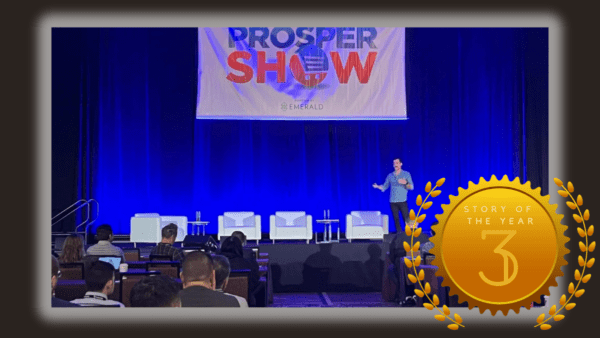The humble sneaker has long been a staple item in closets everywhere for consumers of all ages. The consistent appeal of sneakers and sportswear has grown in recent times with customers, particularly from the Gen Z demographic, continuing to...

The humble sneaker has long been a staple item in closets everywhere for consumers of all ages. The consistent appeal of sneakers and sportswear has grown in recent times with customers, particularly from the Gen Z demographic, continuing to favor them as everyday items for leisure and now work. With the growing popularity of the ‘athleisure’ trend, brought on by a renewed focus on both comfort and style, sneakers and sportswear look set to dominate retail for years to come.
From high-end luxury brands like Balenciaga and Gucci focusing much of their stock offering on sneaker apparel to High Street stores like Walmart offering budget-friendly options, sneakers and sportswear is big business for brands. Nike is a standout performer in the apparel market with the highest brand value of any mass apparel brand, approximately $110 billion, and in 2020 the global sneaker market was valued at approximately $79 billion, which is predicted to hit $120 billion by 2026.
With cultural changes dictating the increase in sportswear purchasing and equal importance being placed on comfort as well as style, how can sports and sneaker retailers utilize ecommerce to grow their slice of the market and compete for customer loyalty?
Festivals, Football and Fashion – the Peak Time to Purchase
Peak times in the retail calendar are important for brands to remember and capitalize upon and they aren’t just relegated to sporting events. Increasingly, sportswear and sneakers are the number one choice of apparel for festivalgoers, given the durability and long-lasting quality of such products, perfect for withstanding the demands of a festival in the desert like Coachella, for example.
With sportswear routinely seen as fashion-wear, big brands have capitalized on the synergy between music artists and sneaker-lovers as a way of targeting their demographic, with the most recent collaboration between Adidas and Bad Bunny using the popularity of Coachella to capture their key audience and pre-launch their new range of sneakers.
Capturing Consumer Interest
Capitalizing on these events is key to driving sales, but it is also vital for brands to look at other ways they can capture customer loyalty and retain it. Launching incentive and loyalty programs is an effective way of appealing to the customer and their interests.
With sustainability issues increasingly informing many customers’ shopping decisions and habits, brands are taking this on board to appeal to their audience. Take the Swiss sneaker brand On Running, which last year launched a subscription service for their fully recyclable Cyclon sneaker, enabling runners who signed up to the monthly subscription to receive replacement shoes when their existing pair wore out.
Employing other advantages, like extending the number of days to return an item, also enables sportswear brands to not only reward customers for their loyalty — bringing them closer to the brand with special and bespoke offers — but also demonstrating a level of flexibility that will guarantee return investment from the consumer. This level of flexibility pays off in a major way, with value-added services acting as a driver for customers to return to a brand of choice, with a reported 64% of customers likely to repurchase if brands offer a ‘free return’.
Preparing Stock – Forecasting, Big Data and the Right Warehouse Management System
While customer service and cultivating brand loyalty through subscription services and loyalty programs are important to generating sales, inventory levels and assessing the balance of supply versus demand is also integral to a successful stream of income. Yet stock is nothing without the right infrastructure in place. In today’s competitive market, it is vital that brands can deliver to customers on time and safeguard their promise of exemplary customer service.
A multi-node fulfillment strategy, based on decentralizing fulfillment processes by taking advantage of micro-distribution centers located close to customers rather than operating out of a single warehouse, can be particularly impactful. By teaming a multi-node fulfillment strategy along with an effective Distributed Order Management (DOM) system, brands can route stock to consumers quickly and efficiently, which is an essential for bulk ordering around time-sensitive sporting events and a guarantee of successful order fulfillment.
An added extra to consider when looking at a fulfillment strategy is alternative fulfillment solutions, like pop-up distribution centers, which can be especially valuable when accommodating sudden spikes in demand during Super Bowl season or other mainstream sporting events. Low-cost, non-permanent infrastructures can be rapidly implemented to enable brands to leverage existing and new storerooms and warehouse locations to fulfill online orders by adding cloud-based omnichannel solutions.
Ecommerce Customer Service Options
The competition between brick-and-mortar stores and ecommerce remains fierce across all industries, and sneakers and sportswear are no different. The way ecommerce can get ahead of the curve is by enacting robust customer service options that not only answer a customer’s query or complaint but also create further affinity with a brand if a customer has a quick and effective response.
The popularity of sportswear and sneakers show no signs of waning, and a touchdown is guaranteed when brands employ the right measures and strategy to create strong customer experience and ongoing loyalty.
Benjamin Scherpenbergs is Director of Business Management at PFS, leading the EU and UK Client Services department at the ecommerce order fulfillment provider. With his team, he drives client engagement and ecommerce operations for large international retail brands and helps create exceptional omnichannel shopping experiences. His background in technology and management consulting taught him to rely on analytics to deliver relevant data-driven strategy recommendations.













